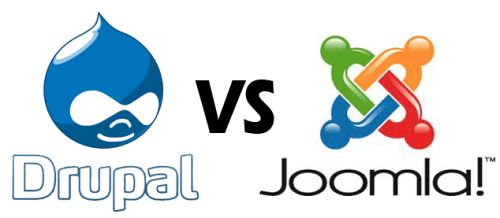Building a website has never been easier, thanks to content management systems (CMS). Two of the more popular options are the open-source CMS platforms: Joomla and Drupal.
Each platform has its fans, as well as its critics. So how do you know which is the better option for your business?

First, you want to understand how the two platforms compare. Most simply, both CMSs have strong, vibrant communities around them and allow for quick website development. Joomla has perhaps focused more on the user experience around creating and editing content — its strength has generally been for content managers and editors, while Drupal has focused more on providing a very integrated experience, and making everything interoperable, according to John Locke, Principal with Freelock, and who has built dozens of websites on both platforms.
“From a high-level perspective, both the Drupal and Joomla CMS platforms offer similar features,” said Bret Otzenberger, vice-president of enterprise technologies with Digitaria, a digital marketing and technology company, and a Joomla fan. “Both are open source, both have large developer communities, both have a pluggable module framework for adding features, and both run on the same technology stacks.”
Hosting Joomla or Drupal is usually not an issue as most web hosting companies can handle that task. However, there are many other considerations when choosing a CMS, Otzenberger added, but key considerations when choosing between Drupal and Joomla are: What type of site you are building? Who is managing the content? Who is doing the development? What are your goals for the site? What might you want to do with it down the road?
Once you’ve determined the answers to those questions, it is time to look at how Joomla and Drupal differ in order to find the better option for your specific needs.
Joomla is a good solution for typical informational websites that have minimal functional requirements, and where you have simple content management needs, Otzenberger pointed out. The administrative interface for Joomla is well documented and designed for simple, intuitive content management for typical informational sites.
Drupal takes a similar approach to building their system as GNU Linux, in that the system consists of many small components (known as modules in Drupal), explained Otzenberger’s colleague Dale Clarke, manager of emerging technologies and Drupal fan.
“Individually, these components don’t do much, but when you combine them and work a little magic you can mold it to almost anything,” he said. “The Joomla approach is more like typical Windows or Apple OS approach, in that you buy a software package that attempts to achieve a given end goal. Changing or tweaking that package can be done, but it’s now a modified package which can make maintenance more difficult.”
If your project requires nothing more than simple content workflow, Joomla is probably your better option. “Create, edit, and publish are all you have for different states of content,” said Otzenberger. “Joomla’s content contributor interface is well documented, has contextual help, and more intuitive for the non-developer audience. If you need anything more complex, you can look for externally developed extensions, or choose a different CMS.”
If you prefer a challenge or have a complex site to build, Drupal could be the right choice. “Drupal has an amazing community,” said Clarke. “They are very helpful and there are a lot of Drupal user groups (DUGs) across the country and around the world. These are a great place for newbies and experts to get help and learn from each other. There is also a standard Drupal way of doing things (code standards, best practices, etc) that are strongly enforced by the community. This results in consistent code that an experienced Drupal developer can quickly pick up to accomplish their goal. It also means security and minor version releases are easily applied.” In addition, Drupal, while more difficult to use for a first-timer, is easier to add on to as your site needs to grow.
In the end, the choice will be based on what you need for your site.
“If all you need is a basic brochure site with some static pages and news, and you have no experience with either platform, you’ll probably get up and running quicker with Joomla,” said Locke. “Drupal is a professional tool in that it’s very hard to learn everything you need to know to get a good usable site in the first place — but once you’re over the learning curve, it’s extremely fast to get a new site going.”
Sue Poremba is a freelance writer focusing primarily on security and technology issues and occasionally blogs for cloud service provider Rackspace Hosting.

